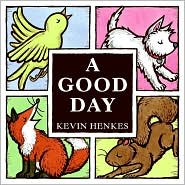
Train Goes Clickety-Clack by Jonathan London

Feathered Friends Storytime Plan
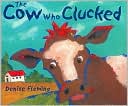
Feathered Friends Storytime Plan
Submitted by Donna Johnson, Sioux City (Northwest Library Service Area, Iowa) Public Library
Babies Everywhere Storytime Plan

Babies Everywhere! for Two and Three-Year-Olds Submitted by Debbie Stanton of Kalona (Southeast Iowa LSA) Public Library
Little Red Hen
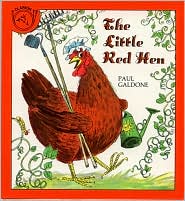
ReadTheLittle Red Hen. As your read the repeated phrases, "Not I," said the dog;"Not I," said the cat; "Not I," said the mouse, run your finger under those words as you say them.
Early Literacy Aside--Example: Running your finger under some of the words helps your child understand that it is the words you are reading, not the pictures. Researchers have found that even for four year olds, 95% of their attention is on the pictures. By pointing you help draw their attention to the text. This helps develop print awareness.
Mouse Shapes by Ellen Walsh

Read the book Mouse Shapes by Ellen Walsh.
Early Literacy Aside--Example: As I read the book, you'll notice how we can combine talking about shapes as we also talk about what is happening in the story. Helping children see shapes is the beginning of letter knowledge.
Craft: Have various shapes cut out, the same ones used in the book. Each PERSON gets a blank sheet of paper. Using shapes, they make a picture. Encourage the adults to talk about all the shapes and also about what they are making with the shapes, both their own picture and their child's. The adult or child can write the child's name on their the paper and find some of the shapes in the letters.
Early Literacy Aside--Empower: Playing with shapes is one way to help your child see shapes in letters and to later identify the letters. For example, this is an N the first letter in your name. See how there is a triangle shape between the lines? You will notice many opportunities during your day to talk with your children about shapes.
Blue Sea by Robert Kalan
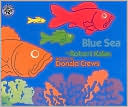
Read the book Blue Sea by Robert Kalan. Use the flannel board to retell the story. You put up the pieces and have the participants retell the story as you put up the pieces. You may say a few words to prompt them.
Early Literacy Aside--Example: Giving children an aid, like the flannel board pieces, helps them remember the story and the order. This helps them develop their narrative skills which both helps them later understand what they will read and helps them understand how stories work.
At the end of storytime, offer a handout (see below)
Early Literacy Aside--Empower: Today I have a handout for Blue Sea for you. You and your children can color and cut out the pieces and then retell the story together. Remember that telling stories will help children later in school when they have to write their own stories.
Patterns for flannel board pieces
Handout for retelling at home
Submitted by Saroj Ghoting
Something from Nothing by Phoebe Gilman
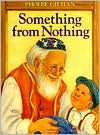
Early Literacy Aside--Explain: One of the best things you can do to help your child be ready to learn to read is to share enjoyable times as you share books. Children who have these positive experiences around books are more likely to stick with learning to read when it comes time for them to learn to read. That enjoyment, called print motivation, goes a long way! Today I'll point out a couple ways you can support enjoyable reading experiences.
Before reading the book Something From Nothing by Phoebe Gilman:
Early Literacy Aside--Example: This is one of my favorite books! It's very clever and I like to watch the mouse story down below here. Adults, when you are reading a book you especially like, let your child know how much you like it and what you like about it. This supports print motivation, the enjoyment of reading.
Read the book Something from Nothing by Phoebe Gilman.
Storytime Plan: Growing Big: Two and Three Year Olds
Origami House with The Three Little Pigs

Early Literacy Aside--Empower: Today in storytime we shared the story of The Three Little Pigs and the children helped me blow down the straw and stick houses, but not the brick one. Giving your child props to retell the story helps develop narrative skills. This skill helps children later understand what they read. So, I am giving you a handout with instructions on how to make the origami house I used. [Demonstrate.] When you do this activity at home, have fun retelling the story together.
Three Pigs Origami House pattern
Submitted by Saroj Ghoting
Roll Your Hands (song) from Toddlers on Parade by Carol Hammett
Sing Roll Your Hands from Toddlers on Parade by Carol HammettWords: Roll, roll, roll your hands fast as fast can be. Do it now, let me see Do it now with me.
Tap, tap, tap your feet Shake, shake, shake your hips Roll, roll, roll your hands [Repeat one or two times all together. Clap together when done.]
Early Literacy Aside--Empower: This is a good rhyme to do as you are bathing or diapering your child. Use different parts of the body and words for different actions to help increase your child's vocabulary. Even though your baby does not understand everything you say, it is important for her to hear you say many words. The wider variety of words that your child hears, the larger her vocabulary will be, and the more easily they will later be able to read.
Five Little Ducks (song) from Rise and Shine by Raffi

Sing the song Five Little Ducks (on Rise and Shine by Raffi)
Early Literacy Aside--Example: There are many songs that have children say the sounds that animals make. Saying animal sounds is the beginning of being able to hear the smaller sounds in words, which later helps them sound out words when they learn to read!
Eensy Weensy Spider (song) from Mainly Mother Goose by Sharon Lois & Bram
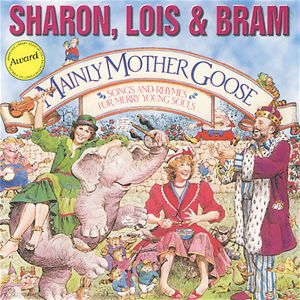
Song Introduction: Our next song is Eensy Weensy Spider on this CD called Mainly Mother Goose by Sharon Lois and Bram. In this version, there is the eensy weensy spider and then next door there is a big, fat spider, and then a teensy weensy spider. Let's listen to the song first and then we'll act it out together.[Talk about a big fat spider and what it might look like, have them try to be a big fat spider. Do the same with a teensy weensy spider, using just your fingers. Have them try it themselves. You can use synonyms for big, fat like huge, enormous, and then for teensy such as tiny, tiny, minute.]
Early Literacy Aside--Example: Adults, by using the movements can help children understand what the words mean. Talking with your children about opposites and using more similar words--all these activities help to develop your children's vocabulary which will later help them understand what they read.
Blue Sea by Robert Kalan
Read the book Blue Sea by Robert Kalan.
Early Literacy Aside--Example: Blue Sea uses the concept of size. You can build your child's vocabulary by talking about different words related to size, like big, bigger, biggest which compare sizes. Also offer words like huge, gigantic, humongous.
Early Literacy Aside--Empower: There are many opportunities throughout the day where you can add new words related to size, such as thin, fat, hard, soft, etc. Exposing your children to new words builds their vocabulary which will help them later understand what they read.

